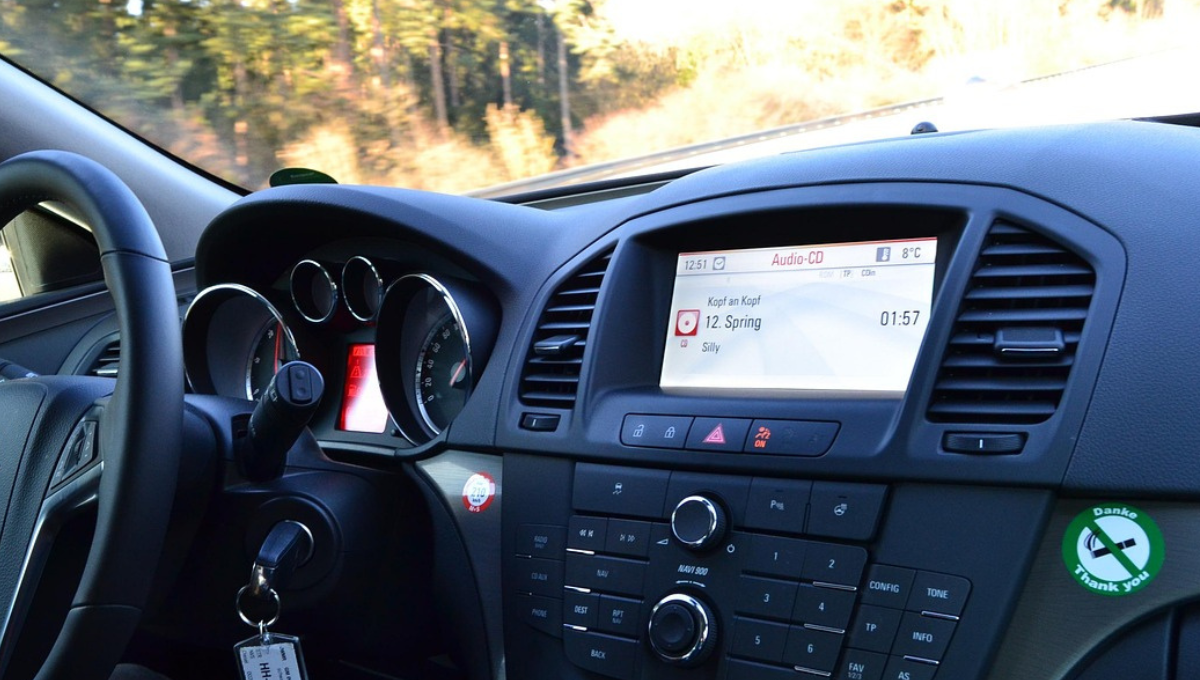Owning a car comes with responsibilities, and one of the most critical is securing proper insurance. Auto insurance protects drivers financially in case of accidents, theft, or damage, but what happens when someone considers doubling up on policies for a single vehicle? The question of whether two auto insurance policies can cover one car sparks curiosity among drivers seeking extra protection or navigating complex ownership situations.
This topic is more common than many realize, especially in scenarios involving shared ownership, leased vehicles, or high-risk drivers. Understanding the nuances of dual insurance policies requires clarity on legalities, benefits, and potential pitfalls. By exploring how insurance companies handle claims, state regulations, and practical implications, drivers can make informed decisions about their coverage needs.
Understanding Auto Insurance Basics
Auto insurance is a contract between a driver and an insurer, providing financial coverage for specific risks. Policies typically include liability, collision, comprehensive, and optional coverages like roadside assistance. Before diving into dual policies, grasping the fundamentals is essential.
Key Components of Auto Insurance
- Liability Coverage: Pays for damages or injuries caused to others in an accident.
- Collision Coverage: Covers repairs to the insured car after an accident.
- Comprehensive Coverage: Protects against non-collision events like theft or natural disasters.
- Personal Injury Protection (PIP): Covers medical expenses for the driver and passengers.
Why Consider Multiple Policies?
Drivers may explore dual policies for various reasons, such as shared vehicle ownership, leased cars, or seeking extra financial protection. However, the feasibility and benefits depend on state laws and insurer rules.
Is Having Two Auto Insurance Policies Legal?
The short answer is yes, it is generally legal to have two auto insurance policies on one car, but the practice comes with caveats. Most states do not prohibit dual coverage, but insurance companies and state regulations impose specific conditions.
Legal Considerations
- State Regulations: Each state has unique insurance laws. Most allow multiple policies, but some require disclosure to insurers.
- Insurer Policies: Insurance companies may have internal rules limiting or discouraging dual coverage.
- Coordination of Benefits: When two policies exist, insurers follow a “coordination of benefits” process to determine which policy pays first.
Practical Scenarios for Dual Coverage
- Shared Ownership: When two people, like spouses or roommates, insure the same car under separate policies.
- Leased Vehicles: Lessees and lessors may each hold a policy to protect their financial interests.
- High-Risk Drivers: Adding a secondary policy to supplement coverage for drivers with poor records.
How Dual Insurance Policies Work
When a car has two insurance policies, both may cover the same risks, but they do not “stack” benefits in most cases. Instead, insurers prioritize which policy pays out first, known as the primary policy, while the secondary policy may cover remaining costs.
Primary vs. Secondary Policies
- Primary Policy: The main policy tied to the car’s primary driver or owner. It pays claims first.
- Secondary Policy: Kicks in only if the primary policy’s limits are exhausted or specific conditions are met.
- Coordination of Benefits: Insurers negotiate to avoid overpayment, ensuring no duplicate compensation.
Example Scenario
Imagine a car owned by two roommates, each with their own policy. If an accident occurs, the primary policy (typically tied to the driver at the time) covers damages up to its limit. The secondary policy may cover additional costs, but only if the claim exceeds the primary policy’s coverage.
Benefits of Dual Auto Insurance Policies
Having two policies can offer advantages in specific situations, though it’s not always necessary or cost-effective. Below are key benefits.
Enhanced Financial Protection
- Higher Coverage Limits: Dual policies can provide access to higher combined limits, useful for expensive claims.
- Gap Coverage: Secondary policies may cover deductibles or gaps not addressed by the primary policy.
Flexibility for Complex Ownership
- Shared Vehicles: Multiple policies accommodate cars used by multiple drivers with different needs.
- Leased or Financed Cars: Lessors and lessees can protect their respective interests with separate policies.
Peace of Mind
For high-value vehicles or high-risk drivers, dual coverage offers reassurance against significant financial losses.
Risks and Drawbacks of Dual Policies
While dual insurance may seem appealing, it comes with potential downsides that drivers must weigh carefully.
Increased Costs
- Higher Premiums: Paying for two policies doubles the financial burden without guaranteed additional benefits.
- Administrative Hassles: Managing multiple policies requires extra paperwork and coordination.
Claim Complications
- Delayed Processing: Insurers may dispute which policy pays first, slowing down claims.
- Risk of Denial: Some insurers may refuse claims if they suspect “double-dipping” or fraud.
Limited Additional Benefits
In many cases, the secondary policy provides little to no extra coverage, as insurers cap payouts to avoid overcompensation.
Key Facts and Findings
| Aspect | Details |
|---|---|
| Legality | Legal in most states, but subject to insurer and state-specific rules. |
| Primary Policy | Pays claims first, tied to the main driver or owner. |
| Secondary Policy | Covers excess costs after primary policy limits are exhausted. |
| Benefits | Higher limits, gap coverage, flexibility for shared or leased vehicles. |
| Drawbacks | Higher costs, claim delays, potential for limited additional benefits. |
| Common Scenarios | Shared ownership, leased cars, high-risk drivers needing extra protection. |
When Does Dual Coverage Make Sense?
Dual insurance policies are not always practical, but certain situations justify the approach.
Shared Ownership Scenarios
When multiple people use or own a car, each may want their own policy to ensure personal liability protection. For example, parents and their teen driver may hold separate policies.
Leased or Financed Vehicles
Leasing companies often require specific coverage, prompting lessees to add their own policy for extra protection.
High-Risk Situations
Drivers with poor records or those insuring high-value cars may seek dual policies to mitigate risks.
Alternatives to Dual Insurance Policies
Instead of doubling up on policies, drivers can explore other ways to achieve similar protection without the added costs.
Increase Coverage Limits
Raising limits on a single policy often provides sufficient protection at a lower cost than maintaining two policies.
Add Umbrella Insurance
An umbrella policy extends liability coverage beyond standard auto insurance, offering a cost-effective alternative.
Bundle Policies
Combining auto, home, or renters insurance with one provider can lower premiums while maintaining robust coverage.
How Insurers Handle Claims with Dual Policies
When a claim arises, insurers follow a structured process to determine responsibility.
Steps in Claim Processing
- Identify the Primary Policy: Based on the driver, owner, or vehicle registration.
- Assess Coverage Limits: The primary policy pays up to its limit.
- Engage Secondary Policy: Covers additional costs if necessary.
- Resolve Disputes: Insurers may negotiate to avoid overpayment.
Challenges to Expect
- Coordination Delays: Disputes between insurers can slow down claim resolution.
- Documentation Needs: Drivers must provide detailed records to both insurers.
State Specific Considerations
Insurance laws vary by state, impacting how dual policies function.
Examples of State Rules
- California: Allows dual policies but requires clear disclosure to insurers.
- New York: Permits multiple policies, but coordination of benefits is strictly enforced.
- Texas: No explicit prohibition, but insurers may limit secondary policy payouts.
Checking Local Regulations
Drivers should consult their state’s insurance department or a licensed agent to understand specific rules.
Tips for Managing Dual Policies
For those opting for dual coverage, proper management ensures smooth operation.
Communicate with Insurers
- Inform both insurers about the existence of another policy to avoid claim denials.
- Provide accurate details about the vehicle and drivers.
Review Coverage Regularly
- Compare policies to eliminate redundant coverage.
- Adjust limits to balance cost and protection.
Work with an Agent
A licensed insurance agent can help navigate the complexities of dual policies and ensure compliance with state laws.
Closing Thoughts
Navigating the world of auto insurance can feel like a maze, especially when considering the possibility of two policies on one car. While legally permissible in most states, dual coverage demands careful consideration of costs, benefits, and potential complications. For some, the added protection offers peace of mind, particularly in shared ownership or high-risk scenarios. For others, alternatives like higher limits or umbrella policies provide similar security without the hassle.
Ultimately, the decision hinges on individual needs, state regulations, and insurer policies. By understanding how primary and secondary policies interact, drivers can make informed choices that align with their financial and practical goals. Consulting with an insurance professional and staying informed about local laws empowers drivers to protect their vehicles and wallets effectively.
FAQs
- Is it legal to have two auto insurance policies on one car?
Yes, most states allow it, but insurers and state laws may impose specific conditions. - Why would someone need two insurance policies for one car?
Common reasons include shared ownership, leased vehicles, or seeking extra protection for high-risk drivers. - Do both policies pay out equally in a claim?
No, the primary policy pays first, and the secondary policy covers excess costs if needed. - Can dual policies save money?
Not usually, as paying for two policies increases costs without always adding benefits. - What is coordination of benefits?
It’s the process insurers use to decide which policy pays first and how much each covers. - Are there risks to having two policies?
Yes, including higher costs, claim delays, and potential disputes between insurers. - Can leased cars have dual policies?
Yes, lessees and lessors may each hold policies to protect their financial interests. - How do insurers determine the primary policy?
The primary policy is typically tied to the car’s main driver or registered owner. - Are there alternatives to dual policies?
Yes, increasing coverage limits or adding an umbrella policy can offer similar protection. - How can drivers manage dual policies effectively?
Communicate with insurers, review coverage regularly, and consult an agent for guidance.







